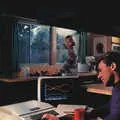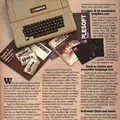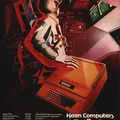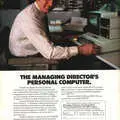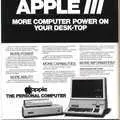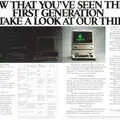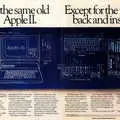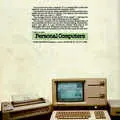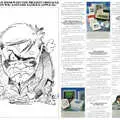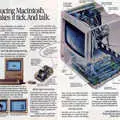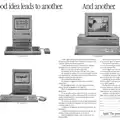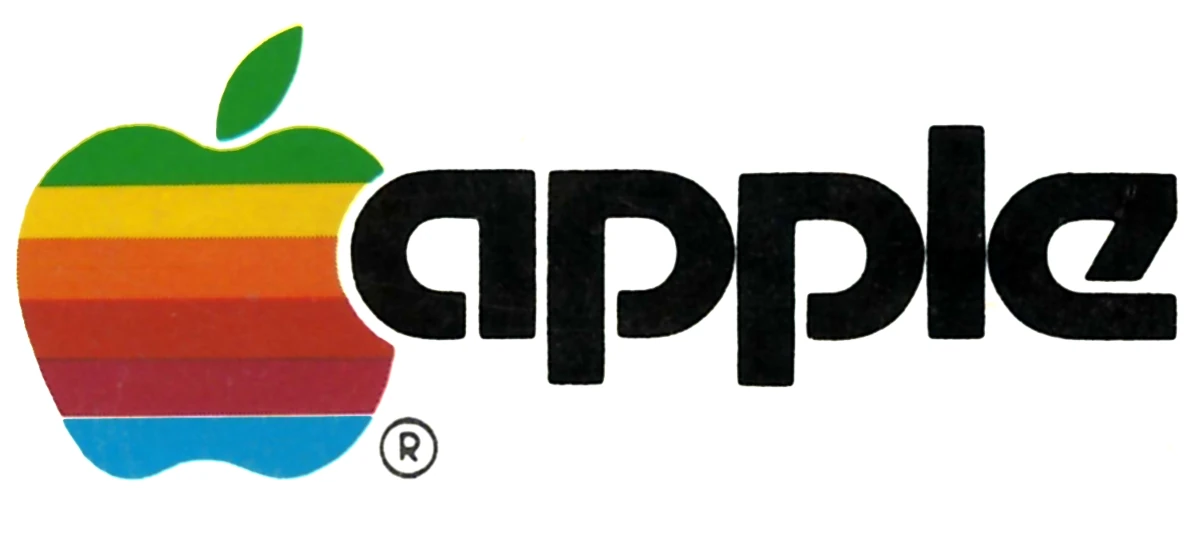
Apple Advert - October 1983
From Personal Computer World
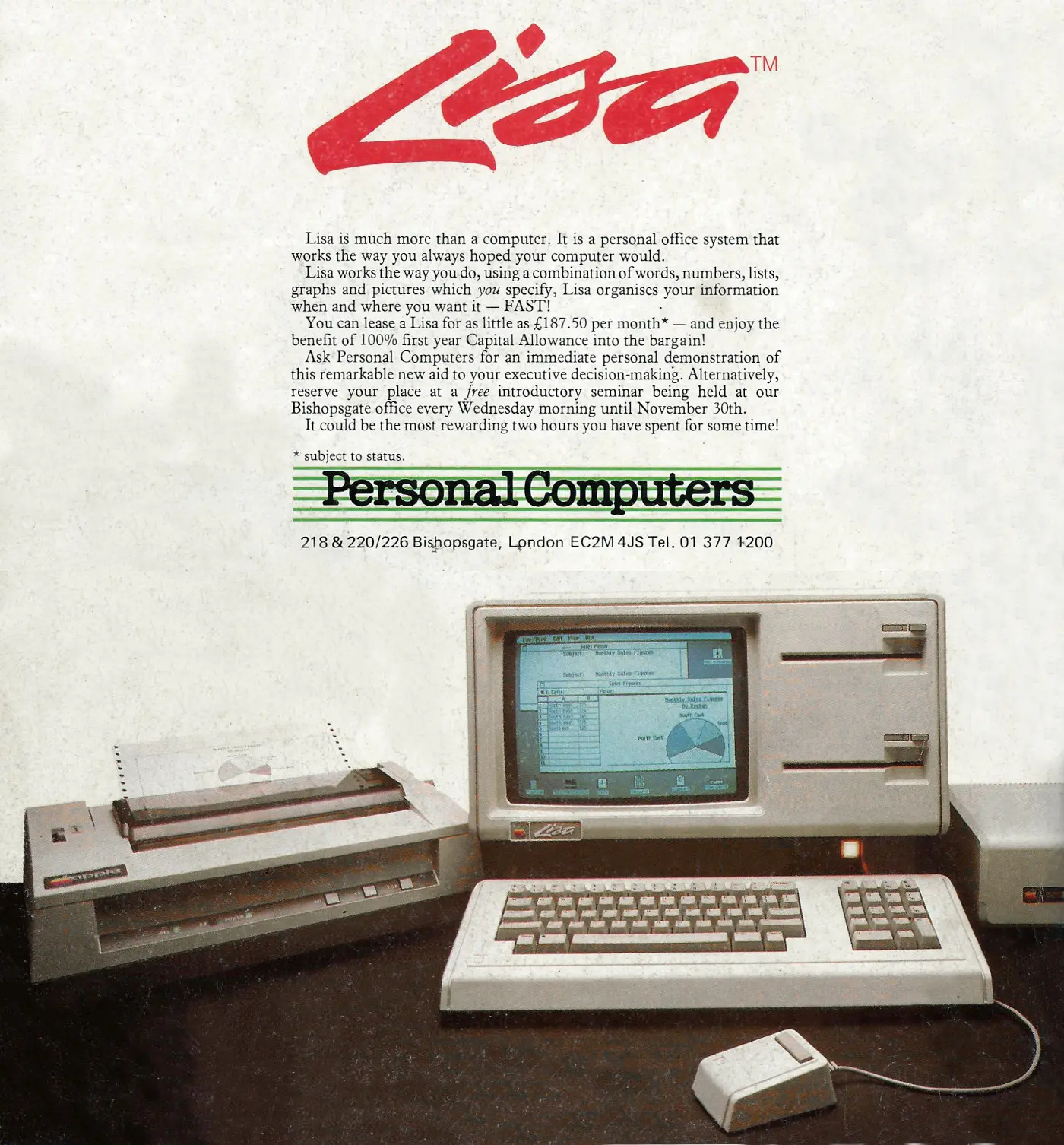
Lisa is much more than a computer
Featured in this back-of-the magazine third-party advert, the ill-fated Lisa was the first mass-market computer to offer the full "WIMP" - Windows, Icons, Mouse, Pointer - experience.
Whilst it had taken an alleged 300 man-years to develop the software (or about four years in real time), compared to 25 man-years for the Apple III and only two for the original Apple II, the various concepts that the Lisa helped make mainstream weren't actually new, having been heavily influenced by work done at Xerox's Palo Alto Research Center on the Dynabook concept, developed in the late 1960s and early 1970s[1], and the Xerox Star.
That influence was quite direct - Xerox's Larry Tesler had been one of the engineers who had first shown the Star to Steve Jobs, before being poached, along with several other Xerox employees, by Apple and not surprisingly becoming a key member of the $50 million, three-year-long Lisa project, as well as heading up development of the important Application Developer's Toolkit[2].
The Xerox Star was still considered to be the nearest competitor to the Lisa, but at £15,000 for the system plus £50,000 for the Ethernet network you needed to use it (a total of £287,200 in 2025 money) it made the £8,000-odd (£35,300) for the Lisa look like a bargain[3].
Even Commodore's Jack Tramiel had a dig at Lisa's high price saying at the 1983 Hanover Fair "We like Lisa, but it's just a tiny bit too pricey".
Tramiel claimed that Commodore was going "to produce a machine with all the features of Lisa for $2000 to $3000 by the end of the year"[4] although Tramiel was understandably vague about the exact details of the rumoured "Mouse Cursor" machine[5] which would become the Atari ST.
But at least the Lisa could be rented for "only" £184 per month - about £810 in 2025, or around the same as a £100K mortgage.
With those sorts of prices on offer, perhaps it's no wonder that the feeling with Xerox was reported to have been "we blew it".
For that money you did at least get no fewer than three 8-bit processors in addition to a 32/16-bit Motorola 68000, together with 1MB RAM and two 860K floppy drives.
The Lisa's ridiculously high price, at a time when even a "real" IBM was available for under £3,000, was one reason that it failed to sell.
Its ambitious but highly-complex software, written in SmallTalk[6] - also a product of the Xerox Star development - was also considered buggy when released, with Guy Kewney of Personal Computer World writing that "it isn't going to be bug-free this year" before suggesting that "it may be bug-free enough for the really enthusiastic user to tolerate by September [of 1983]"[7].
It wasn't until Apple released the Macintosh in 1984 that "WIMP" computers really took off.
The use of Smalltalk on the Lisa was ironic, given that only the previous year Apple's Steve Jobs, whilst defending the Apple III's 8-bit 6502 processor, had suggested that "people who are chasing 16 bits and more memory are in the wrong race"[8].
However, Edward Cherlin of research company Strategic, based in San Jose, California, was pointing out that the Smalltalk language, which developed from Xerox's "desire to make the machine/person interface as easy as possible", was one of the greatest benefits of 16-bit processors, because it was a very RAM-hungry language that could only run on systems with 16-bit address spaces.
This finally gave such languages "sufficient room to include all features without arbitrary limitations"[9].
At about the same time as this advert, Apple UK announced a significant price drop, following a reduction in the US, although this required the purchasing of a software package containing six program whether you wanted them or not.
The price had been reduced by nearly 20% and was down to £6,500 - about £28,700 in 2025 - which included the six programs "for the price of four".
Apple also reported that "about 200 machines [have been] installed with large, national-account types of business" out of around 2,000 that were thought to have been sold worldwide up to that point.
The enforcing of software was said to have been down to the lack of third-party Lisa software in the UK, whereas allowing North American buyers to go free range "made much more sense in the US", at least according to Apple UK's general manager Mike Spring "because of the much larger market for third-party software"[10].
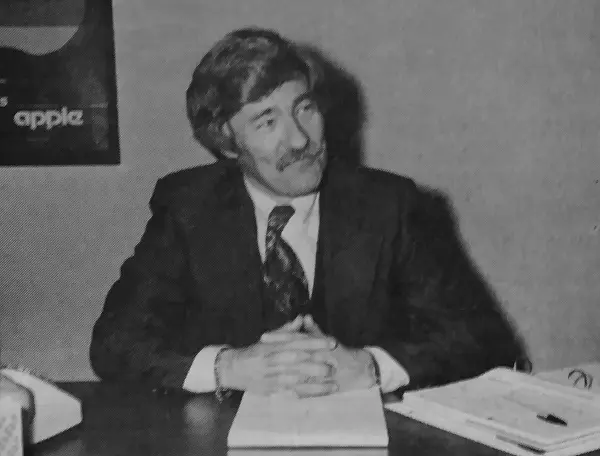
Thomas J Lawrence, Apple's European Manager, © Practical Computing September 1982Before it was released as the Lisa, the machine was perhaps inevitably known in the press as the Apple IV, since "top Apple people" had arrived in London "John the Baptist" fashion, according to Practical Computing at least, to spread the word about their fourth-generation machine.
Apple was firming up its belief that such fourth generation machines would only sell on the back of good software - a process which included the trimming of 231 dealers (from a near-600 previous count) by ex-Commodorean Keith Hall, the new Apple UK marketing head. As European VP Thomas Lawrence suggested "Hot hardware won't win the battle".
This meant that it was expected that the new machine would bring with it a good selection of its own software, since it was unlikely that Apple would be wasting its new machine's rumoured 16-bit processor and memory by "emulating CP/M or some other historical artifact"[11].
By 1984, the Lisa's price had been dropped down to a mere £4,000, or about £16,800 in 2025 and by the start of 1985 it had renamed it as the Macintosh XL, in order to end confusion about its Mac compatibility[12].
Not long afterwards in May it was announced that it was being dropped completely in favour of the regular Macintosh, albeit a version of the Mac that finally had some extra memory - 512K - and a bigger 20Mb hard disk.
Apple was feeling the heat from Atari's 520ST and other GEM-based micros[13].
Some of the ethos that led to the Lisa had been expressed by Steve Jobs way back in 1980, when he had been speaking at the Rosen Research Personal Computer Forum in New Orleans, along with Commodore's Chuck Peddle, Bill Gates of Microsoft, John Roach of Radio Shack/Tandy and Allan Alcorn of Atari.
When asked what he understood by the term "personal computer", Jobs said that it is:
"when a one-to-one relationship develops which gives the user a feeling of independence and power that he could not experience in a large data processing environment or which wouldn't be possible without the aid of the computer. The 'nuts and bolts' must be shielded from the user in such a way that the machine itself recedes in to the background and the user sees it solely as a tool for his particular task".
He continued that personal computers should be seen as simply tools which amplify "the natural capabilities of the human mind"[14].
Date created: 20 October 2014
Last updated: 11 December 2024
Hint: use left and right cursor keys to navigate between adverts.
Sources
Text and otherwise-uncredited photos © nosher.net 2025. Dollar/GBP conversions, where used, assume $1.50 to £1. "Now" prices are calculated dynamically using average RPI per year.
